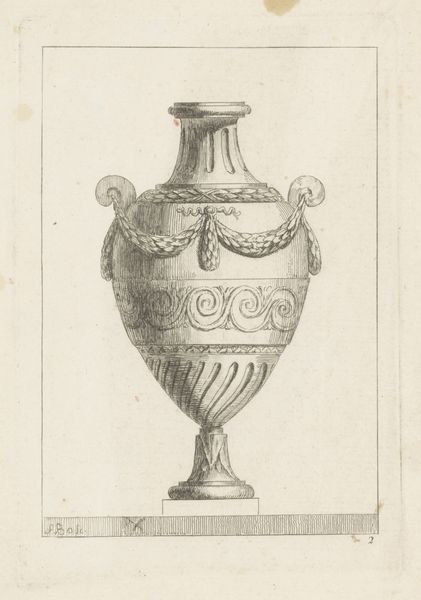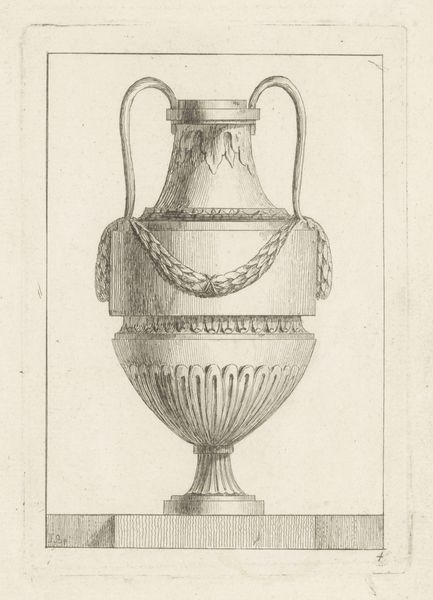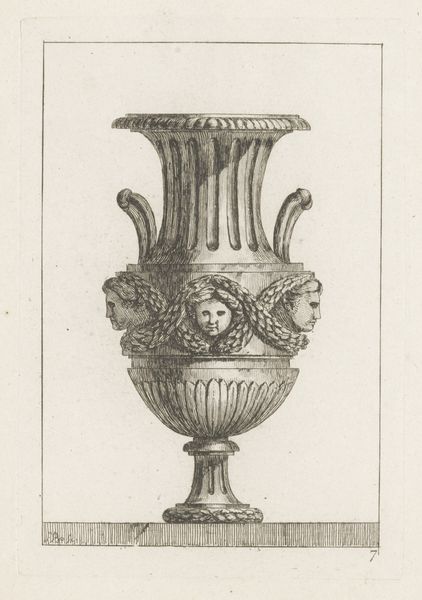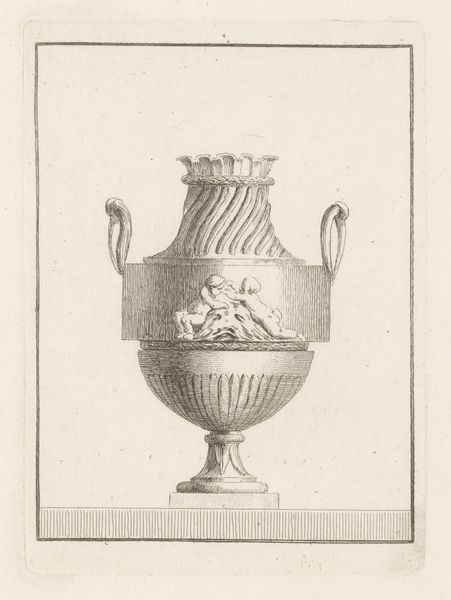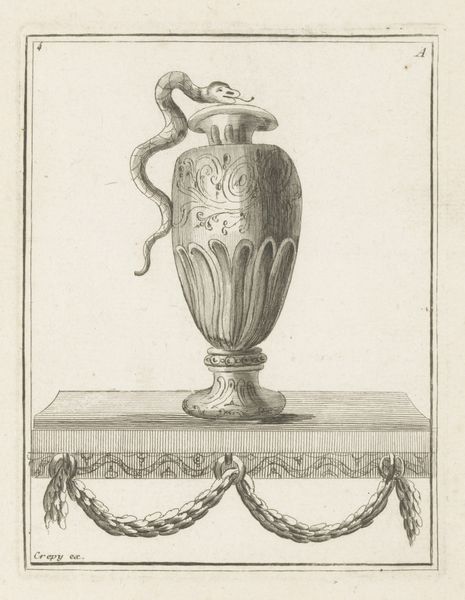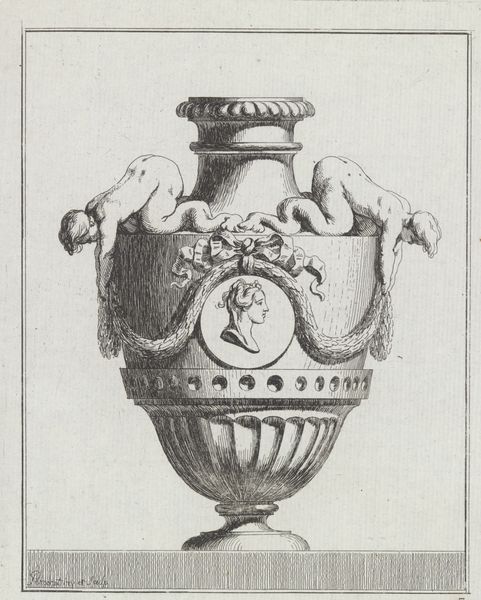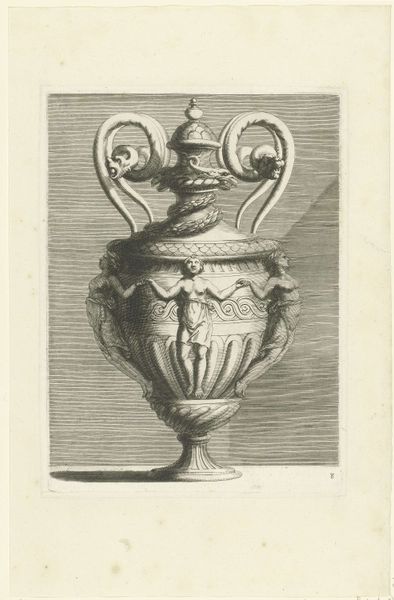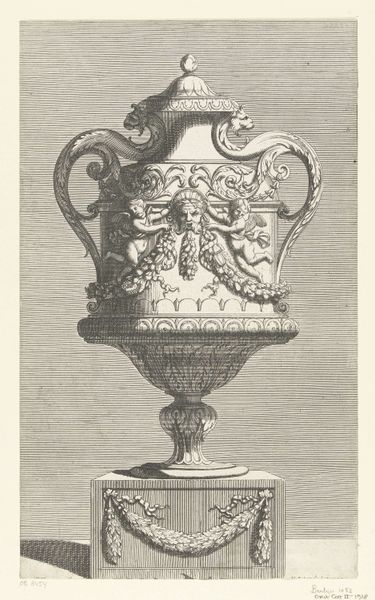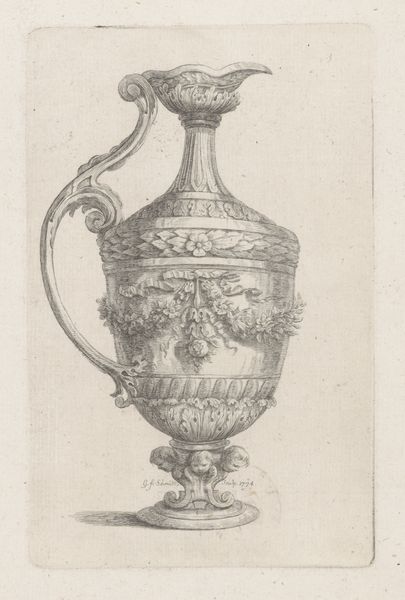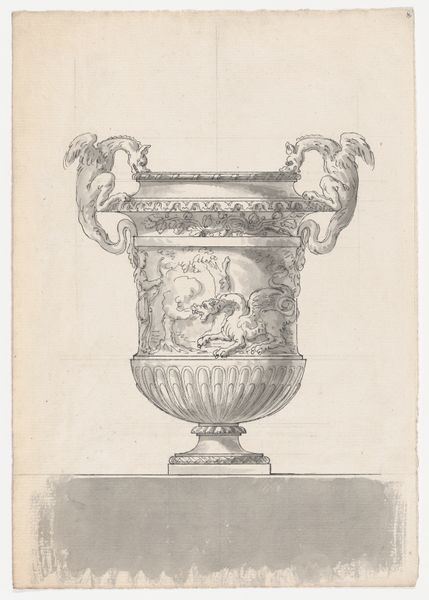
Dimensions: height 133 mm, width 96 mm
Copyright: Rijks Museum: Open Domain
This print of a vase with putti and bucranium was created by Juste Nathan Boucher in the late 18th century. Boucher lived during a time of rigid social hierarchies, and as the son of the celebrated artist François Boucher, he inherited a world of privilege and expectation. Here, the delicate etching technique captures the style of the Rococo period, known for its ornate designs favored by the aristocracy. But look closer. The putti, or cherubic figures, and the bucranium, an ox skull motif, evoke complex themes. Are they innocent play or reminders of sacrifice and mortality? This tension reflects the era's unease, a society on the brink of revolution, where the opulent facade hid deeper anxieties. This print invites us to consider the relationship between beauty, power, and the hidden costs of luxury. What does it mean to decorate with symbols of both innocence and death? Perhaps Boucher is inviting us to contemplate our own values and the legacies we leave behind.
Comments
No comments
Be the first to comment and join the conversation on the ultimate creative platform.
